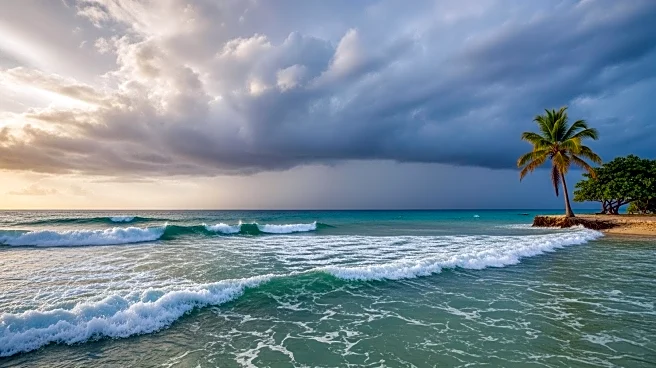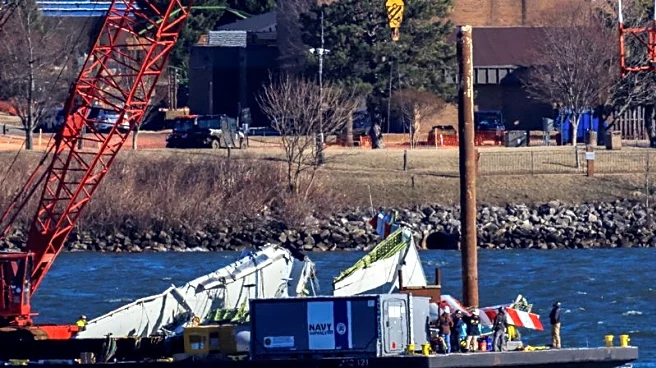What's Happening?
Tropical Storm Lorenzo continues to churn in the central tropical Atlantic Ocean, with maximum sustained winds of 60 mph. The storm is located about 1,330 miles west of the Cape Verde Islands and is moving northwest at 15 mph. Forecasters describe Lorenzo as 'poorly organized' and expect it to turn northward and then northeast over the next few days, remaining over open waters without threatening land.
Why It's Important?
The weakening of Tropical Storm Lorenzo and its path over open waters highlight the importance of monitoring storm developments to assess potential threats. While Lorenzo poses no immediate danger to land, its behavior contributes to the understanding of storm dynamics and atmospheric conditions. The storm's trajectory is part of the broader Atlantic hurricane season, which impacts weather patterns and preparedness strategies.
What's Next?
Lorenzo is expected to continue its path over the Atlantic, gradually weakening. Meteorologists will track its progress and analyze data to improve forecasting models. The storm's behavior may inform ongoing research on atmospheric patterns and their effects on storm development.
Beyond the Headlines
The storm's development amid a La Niña pattern could have broader implications for weather patterns, potentially affecting precipitation and temperature trends across the U.S. Understanding these patterns is crucial for preparing for future weather-related challenges.













